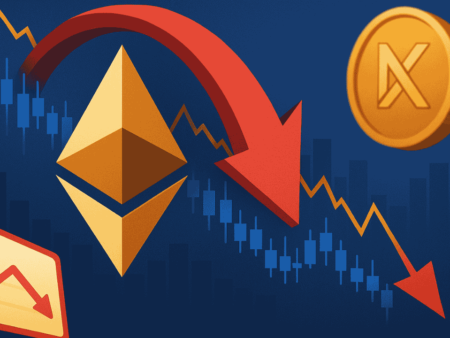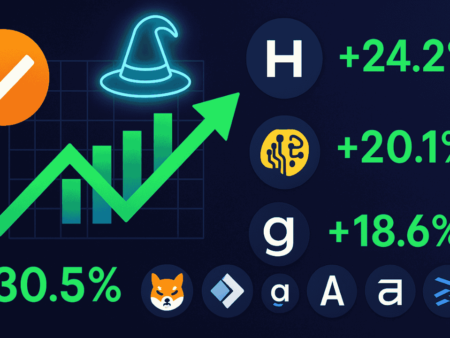By now, the idea that Ethereum needs help to scale is old news. The base chain, for all its security and decentralization, still moves like a city stuck in perpetual traffic—expensive, congested, and frustrating to navigate. Layer-2 solutions promised the fast lanes. By 2025, three names dominate the conversation: Arbitrum, Optimism, and Base.
Each of them claims to be the go-to solution for cheaper, faster Ethereum transactions. But in practice, what we’re seeing is less about one chain “winning” and more about how each is carving its own lane in a crowded ecosystem that’s starting to feel like a battleground.
The Early Sprint: Arbitrum’s Head Start
If Layer-2 adoption were a foot race, Arbitrum shot off the blocks first. Launched with rollup tech that cut fees dramatically, it quickly built a reputation as the place where serious DeFi players went to avoid Ethereum’s brutal gas wars. Its Arbitrum Nitro upgrade further improved throughput and costs, cementing its role as the most liquid Layer-2.
Protocols followed the liquidity. Uniswap, GMX, Aave, and dozens of other DeFi heavyweights built Arbitrum-native communities. Even NFT marketplaces experimented with dropping collections there. For a while, it felt like Arbitrum had a lock on the market.
But the head start also painted a target on its back.
Optimism: Playing the Long Game
Optimism, once dismissed as the slower, more academic cousin, has quietly built something different: a governance-first ecosystem. Instead of focusing solely on transaction throughput, Optimism leaned into its Optimism Collective—a unique governance model that directs sequencer revenue toward funding public goods and ecosystem growth.
It’s a bet that crypto-native culture matters as much as transaction speed. And it’s paying off. By positioning itself as the “Ethereum-aligned” Layer-2, Optimism has won over developers who want to experiment with governance, identity, and community ownership alongside infrastructure.
And then there’s OP Stack—an open-source framework that lets anyone spin up their own rollup. Optimism isn’t just a chain; it’s a toolkit. Coinbase noticed.
Base: Coinbase’s Trojan Horse
When Coinbase rolled out Base in 2023, skeptics sneered. Another chain? From a centralized exchange? The irony was thick. But two years later, Base has become something more subtle: a Trojan horse for mainstream adoption.
Coinbase wove Base directly into its app, meaning millions of users gained frictionless access to an Ethereum Layer-2 without ever needing to understand Metamask, RPC endpoints, or bridging. For the first time, a Layer-2 wasn’t just for the crypto-native crowd. It was for everyone with a Coinbase account.
And Base hasn’t been shy about courting developers, either. With OP Stack under the hood, Base enjoys the same modular framework as Optimism—but with Coinbase’s distribution muscle. That combination has turned it into a serious contender.
Three Chains, Three Philosophies
By 2025, it’s less about raw speed—the underlying tech has converged enough that users rarely notice a difference—and more about identity.
- Arbitrum: The DeFi powerhouse. It’s where serious traders, liquidity providers, and yield hunters still cluster, thanks to deep liquidity and a mature ecosystem.
- Optimism: The governance lab. Developers who care about community ownership, retroactive public goods funding, and experimentation gravitate here.
- Base: The mainstream bridge. It’s not the most ideologically pure, but it’s the one onboarding the next hundred million users.
The Layer-2 battle isn’t a single race—it’s three different sports happening on the same track.
The Next Front: Interoperability and Sequencer Wars
The irony? All three chains still rely on centralized sequencers to process transactions, even as they promise decentralization down the line. That’s the elephant in the room. Whoever figures out how to decentralize sequencing without sacrificing performance could tilt the balance.
At the same time, interoperability is becoming the real frontier. Users don’t care which Layer-2 they’re on—they care whether they can move seamlessly between them. Cross-rollup bridges, shared liquidity layers, and even “superchains” stitched together by frameworks like OP Stack could turn rivals into reluctant collaborators.
It’s a reminder that in crypto, the line between competition and cooperation is thin.
The Stakes
Why does this battle matter? Because the winner—or winners—will shape how the majority of users experience Ethereum. These Layer-2s are no longer experimental side roads. They’re the highways carrying most of the traffic.
If Arbitrum continues to dominate liquidity, Optimism builds out its governance-first ecosystem, and Base keeps onboarding the masses, we may not see a single victor. Instead, we may see a layered ecosystem where each chain becomes indispensable in its own way.
Ethereum, once bogged down in congestion, might finally have the scaling future it always promised.











